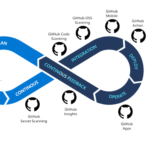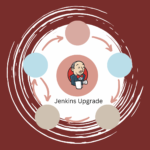In E-commerce environment, managing inventory in real-time while maintaining cost efficiency and scalability is a critical challenge. Traditional monolithic applications struggle to keep up with the dynamic demands of modern online stores, especially during peak sales events like Black Friday. This is where event-driven microservices shine, enabling systems to react instantly to events such as orders, stock updates, and shipments.
This blog post dives deep into designing and implementing an event-driven microservices architecture on AWS, leveraging powerful tools like AWS Lambda, SQS, SNS, KEDA, Dapr, and DynamoDB. We’ll explore how to build a scalable, resilient real-time inventory management system that can handle 10,000+ transactions per second while reducing infrastructure costs by 40%. Whether you’re an architect, developer, or DevOps engineer, this guide offers expert insights and practical steps to harness these technologies effectively.
Key Concepts and Trends
Event-Driven Architecture (EDA)
Event-driven architecture is a design paradigm where services communicate by producing and consuming events asynchronously. This decouples components, improves scalability, and enhances responsiveness. In e-commerce, events like “OrderPlaced” or “InventoryUpdated” trigger workflows without tight coupling.
Serverless Computing with AWS Lambda
AWS Lambda allows running code without provisioning or managing servers. It scales automatically in response to incoming events, making it ideal for business logic triggered by order events.
Message Queues and Pub/Sub with SQS and SNS
Amazon Simple Queue Service (SQS) and Simple Notification Service (SNS) enable reliable, scalable messaging. SNS publishes events to multiple subscribers, while SQS queues messages for asynchronous processing by consumers.
Kubernetes Event-Driven Autoscaling (KEDA)
KEDA is an open-source component that enables Kubernetes pods to autoscale based on event sources like SQS queue depth. This ensures resource efficiency by scaling workloads only when needed.
Dapr: Distributed Application Runtime
Dapr simplifies building microservices by providing APIs for pub/sub messaging, state management, and resilience patterns like retries and circuit breakers, abstracting away infrastructure complexities.
DynamoDB for Low-Latency Storage
Amazon DynamoDB is a fully managed NoSQL database offering single-digit millisecond latency, perfect for real-time inventory data storage and retrieval.
Designing the Architecture: Real-Time Inventory Management Use Case
Imagine an e-commerce platform where thousands of orders flow in every second. The system must update inventory instantly to avoid overselling, notify other services for shipment, and maintain cost efficiency during fluctuating traffic.
Architecture Components
- Order Placement: Customers place orders triggering events.
- SNS Topics: Publish order events to multiple subscribers.
- SQS Queues: Buffer order processing tasks asynchronously.
- AWS Lambda: Executes business logic such as validating orders, updating inventory, and sending notifications.
- DynamoDB: Stores inventory data for fast reads and writes.
- Kubernetes with KEDA: Runs microservices pods that autoscale based on SQS queue depth.
- Dapr: Manages cross-service communication, state management, and resilience.
Workflow Overview
- Order placed → SNS publishes
OrderPlacedevent. - SQS queues the event for processing.
- KEDA monitors SQS queue depth and scales Kubernetes pods accordingly.
- Pods running microservices consume messages, use Dapr for pub/sub and state management.
- Business logic in Lambda functions updates DynamoDB inventory.
- Notifications sent for shipment or customer updates.
Step-by-Step Implementation Guide
1. Set Up AWS SNS and SQS
Create an SNS topic for order events and an SQS queue subscribed to this topic:
aws sns create-topic --name OrderEvents
aws sqs create-queue --queue-name OrderProcessingQueue
aws sns subscribe --topic-arn <topic-arn> --protocol sqs --notification-endpoint <queue-arn>
2. Develop AWS Lambda Functions
Write Lambda functions to process orders and update inventory. Example Node.js snippet:
exports.handler = async (event) => {
for (const record of event.Records) {
const order = JSON.parse(record.body);
// Business logic: validate order, update inventory in DynamoDB
await updateInventory(order.productId, order.quantity);
}
};
async function updateInventory(productId, quantity) {
// DynamoDB update code here
}
3. Deploy Microservices on EKS with KEDA
Deploy your microservices on Amazon EKS (Elastic Kubernetes Service). Install KEDA to autoscale pods based on SQS queue length:
kubectl apply -f https://github.com/kedacore/keda/releases/latest/download/keda-2.10.0.yaml
Create a KEDA ScaledObject manifest:
apiVersion: keda.sh/v1alpha1
kind: ScaledObject
metadata:
name: order-processor-scaledobject
spec:
scaleTargetRef:
name: order-processor-deployment
triggers:
- type: aws-sqs-queue
metadata:
queueURL: <SQS_QUEUE_URL>
awsRegion: <AWS_REGION>
queueLength: "5"
4. Integrate Dapr for Service Communication and Resilience
Use Dapr sidecars for each microservice to enable:
- Pub/Sub: Decouple event messaging between services.
- State Management: Persist state with Redis or DynamoDB.
- Resilience: Automatic retries and circuit breakers.
Example Dapr pub/sub usage in microservice:
curl -X POST http://localhost:3500/v1.0/publish/orderpubsub OrderPlaced -d '{"orderId":"123"}'
5. Use DynamoDB for Fast Inventory Reads/Writes
Design your DynamoDB tables with partition keys optimized for product IDs and use conditional writes to prevent overselling.
Latest Tools and Technologies
- AWS Lambda: Serverless compute for event-driven functions.
- SQS & SNS: Reliable messaging and notification services.
- KEDA: Kubernetes autoscaler based on event sources.
- Dapr: Simplifies microservice communication and state.
- DynamoDB: Low-latency NoSQL database.
- Amazon EKS: Managed Kubernetes service.
Challenges and Solutions
Challenge 1: Handling Traffic Spikes
During sales events, traffic surges can overwhelm infrastructure.
Solution: KEDA autoscaling based on SQS queue depth ensures pods scale out only when needed, reducing idle resource costs.
Challenge 2: Ensuring Data Consistency
Concurrent inventory updates risk overselling.
Solution: Use DynamoDB conditional writes and idempotent Lambda functions to maintain consistency.
Challenge 3: Cross-Service Communication Complexity
Managing retries, failures, and communication can be complex.
Solution: Dapr abstracts these concerns with built-in pub/sub, state management, retries, and circuit breakers.
Real-World Example
Case Study: E-Commerce Platform Black Friday Sales
A leading e-commerce company implemented this architecture to handle 10,000+ transactions per second during Black Friday. By integrating KEDA for autoscaling and Dapr for service communication, they reduced infrastructure costs by 40% while maintaining near-zero latency inventory updates. This enabled a seamless shopping experience even under extreme load.
For more details, see the AWS case study on serverless e-commerce architectures: AWS Real-Time Inventory Management
Future Outlook and Emerging Trends
- Increased Adoption of Serverless Kubernetes: Combining serverless with Kubernetes (via KEDA) will grow for event-driven workloads.
- Advancements in Distributed Runtime Frameworks: Dapr and similar frameworks will add richer features for observability and security.
- AI-Driven Autoscaling: Predictive autoscaling based on machine learning to optimize costs and performance.
- Edge Computing Integration: Event-driven microservices deployed closer to users for ultra-low latency.
Summary
Building event-driven microservices on AWS using KEDA and Dapr offers a powerful, scalable, and cost-efficient solution for real-time inventory management in e-commerce. By leveraging AWS Lambda for serverless compute, SQS/SNS for messaging, DynamoDB for fast storage, and Kubernetes autoscaling with KEDA, organizations can handle massive transaction volumes with resilience and agility. Dapr further simplifies service communication and fault tolerance, enabling developers to focus on business logic.
Implementing this architecture can significantly reduce infrastructure costs while improving responsiveness and scalability, making it ideal for dynamic, high-traffic applications.
Further Reading and References
- AWS Lambda Documentation
- Amazon SQS
- Amazon SNS
- KEDA Official Site
- Dapr Official Documentation
- Amazon DynamoDB
- Amazon EKS
- AWS Real-Time Inventory Management Case Study
If you’re ready to transform your e-commerce platform with scalable, event-driven microservices on AWS, let’s connect! Reach out to us for expert guidance and tailored solutions that fit your business needs. Contact us today and start building the future of real-time inventory management.



